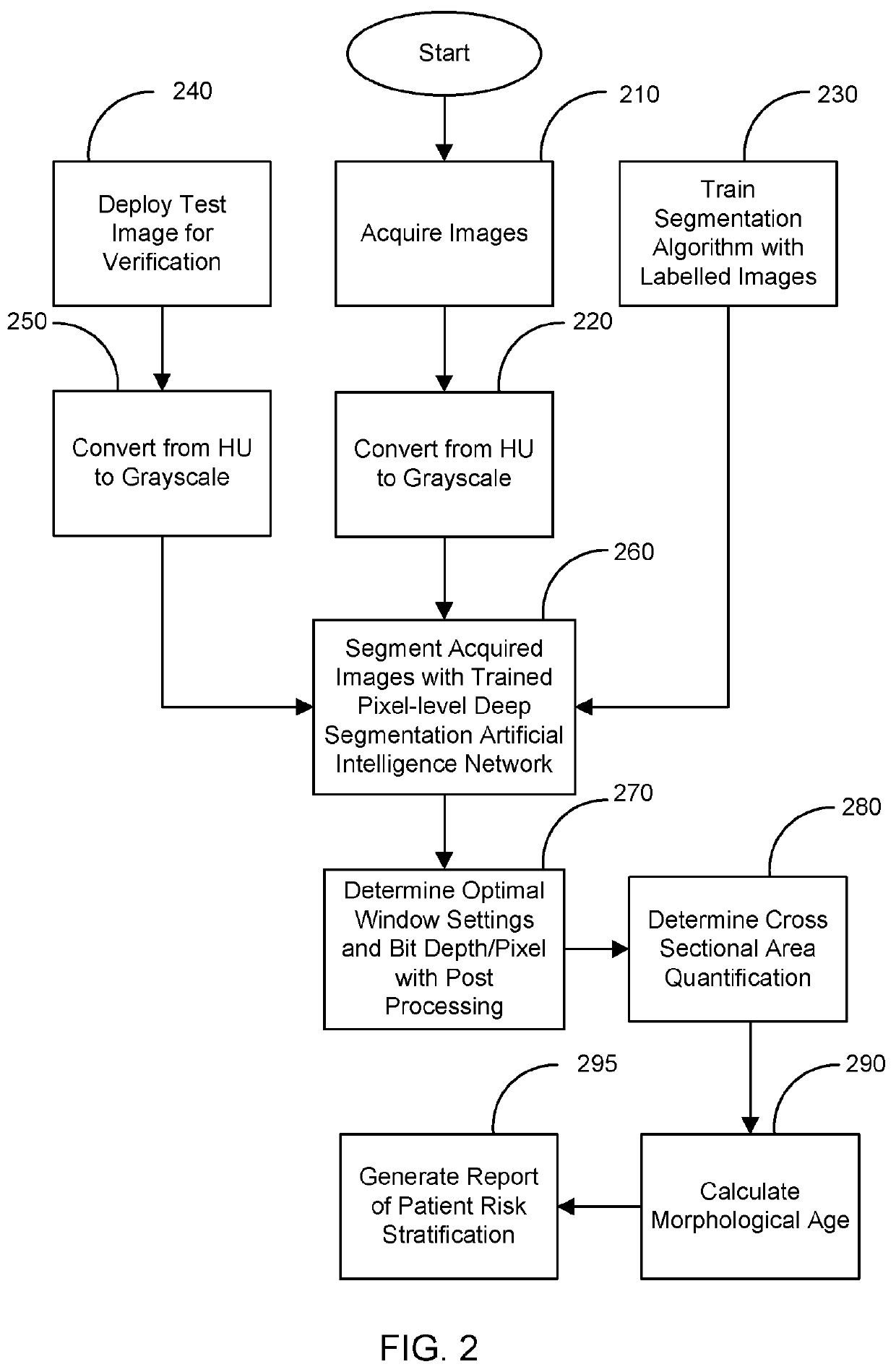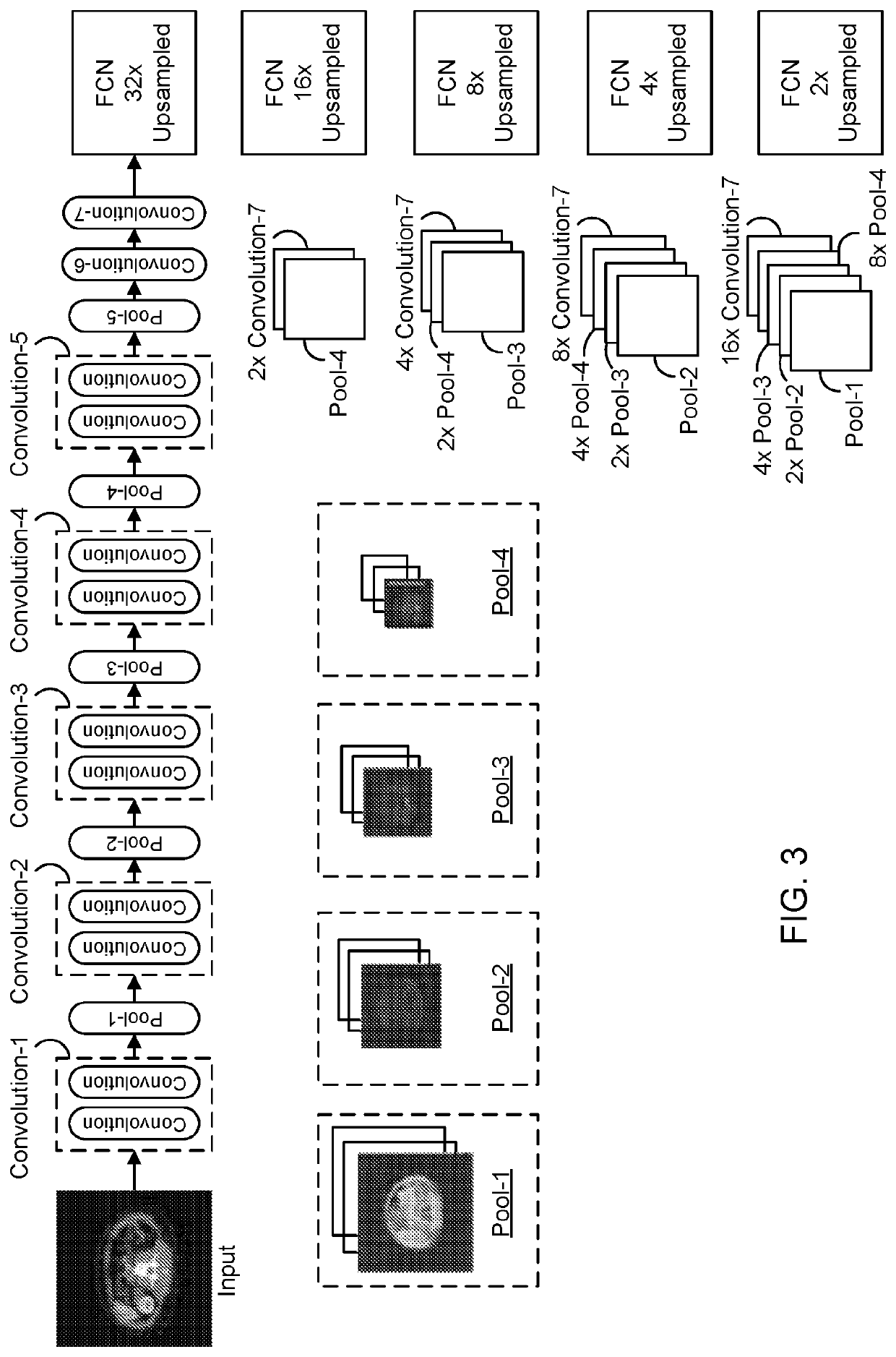Patient risk stratification based on body composition derived from computed tomography images using machine learning
a computed tomography and patient technology, applied in tomography, image enhancement, instruments, etc., can solve the problems of inability to generalize approaches, inability to automatically analyze body composition on large datasets, and manual correction of segmentation errors, etc., to achieve more accurate analysis
- Summary
- Abstract
- Description
- Claims
- Application Information
AI Technical Summary
Benefits of technology
Problems solved by technology
Method used
Image
Examples
Embodiment Construction
[0021]Muscle cross sectional area has been shown to correlate with a wide-range of posttreatment outcomes. However, integration of muscle CSA measurements in clinical practice have been limited by the time required to generate this data. By dropping calculation time from 1800 seconds to less than one second, research into new applications for morphometric analysis may be drastically sped up. CT is an essential tool in the modern healthcare arena with approximately 82 million CT examinations performed in the US in 2016. In lung cancer in particular, the current clinical paradigm has been on lesion detection and disease staging with an eye toward treatment selection. However, accumulating evidence suggests that CT body composition data could provide objective biological markers to help lay the foundation for the future of personalized medicine. Aside from preoperative risk stratification for surgeons, morphometric data may be used to predict death in radiation oncology and medical onc...
PUM
 Login to View More
Login to View More Abstract
Description
Claims
Application Information
 Login to View More
Login to View More - R&D
- Intellectual Property
- Life Sciences
- Materials
- Tech Scout
- Unparalleled Data Quality
- Higher Quality Content
- 60% Fewer Hallucinations
Browse by: Latest US Patents, China's latest patents, Technical Efficacy Thesaurus, Application Domain, Technology Topic, Popular Technical Reports.
© 2025 PatSnap. All rights reserved.Legal|Privacy policy|Modern Slavery Act Transparency Statement|Sitemap|About US| Contact US: help@patsnap.com



